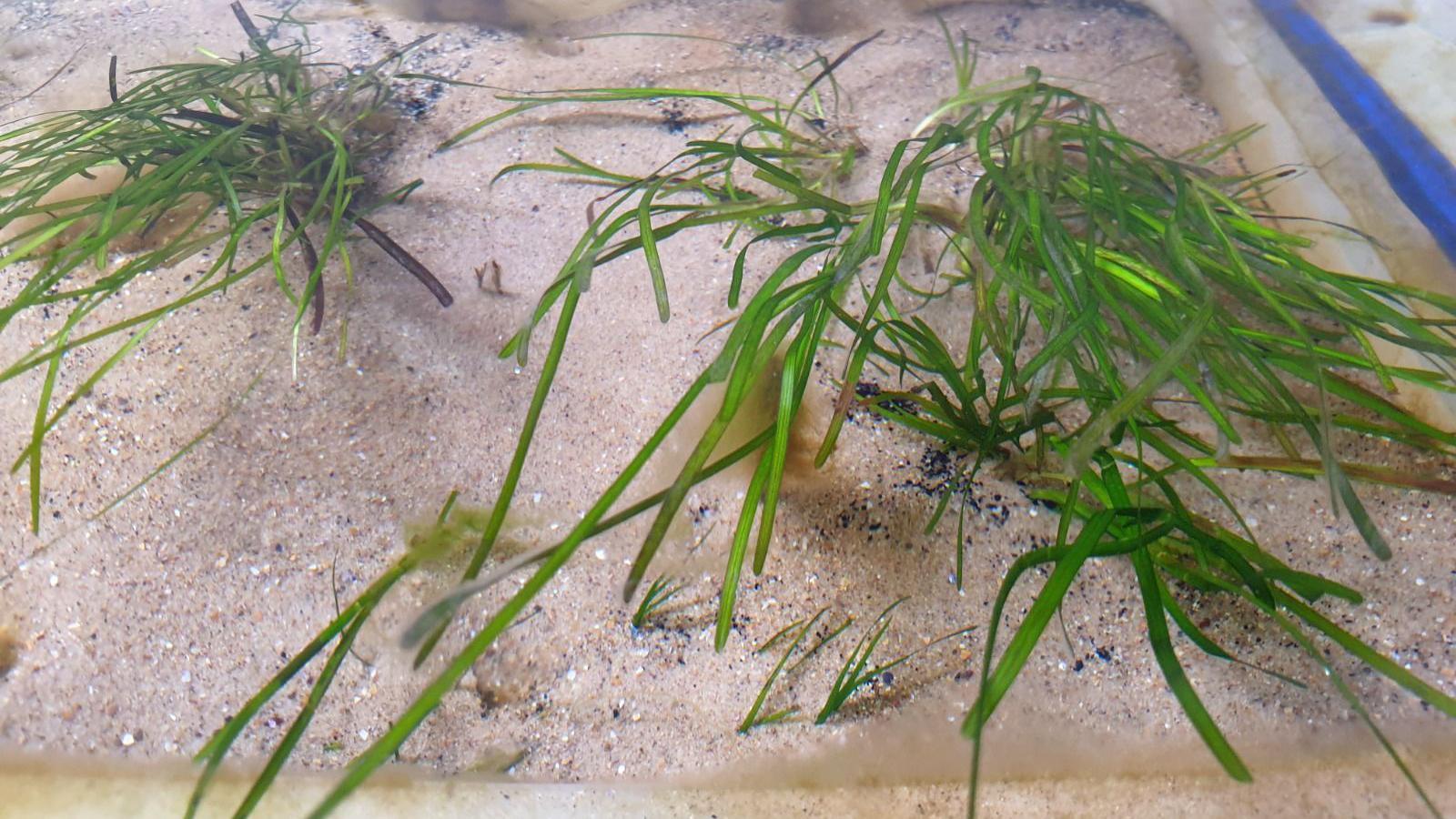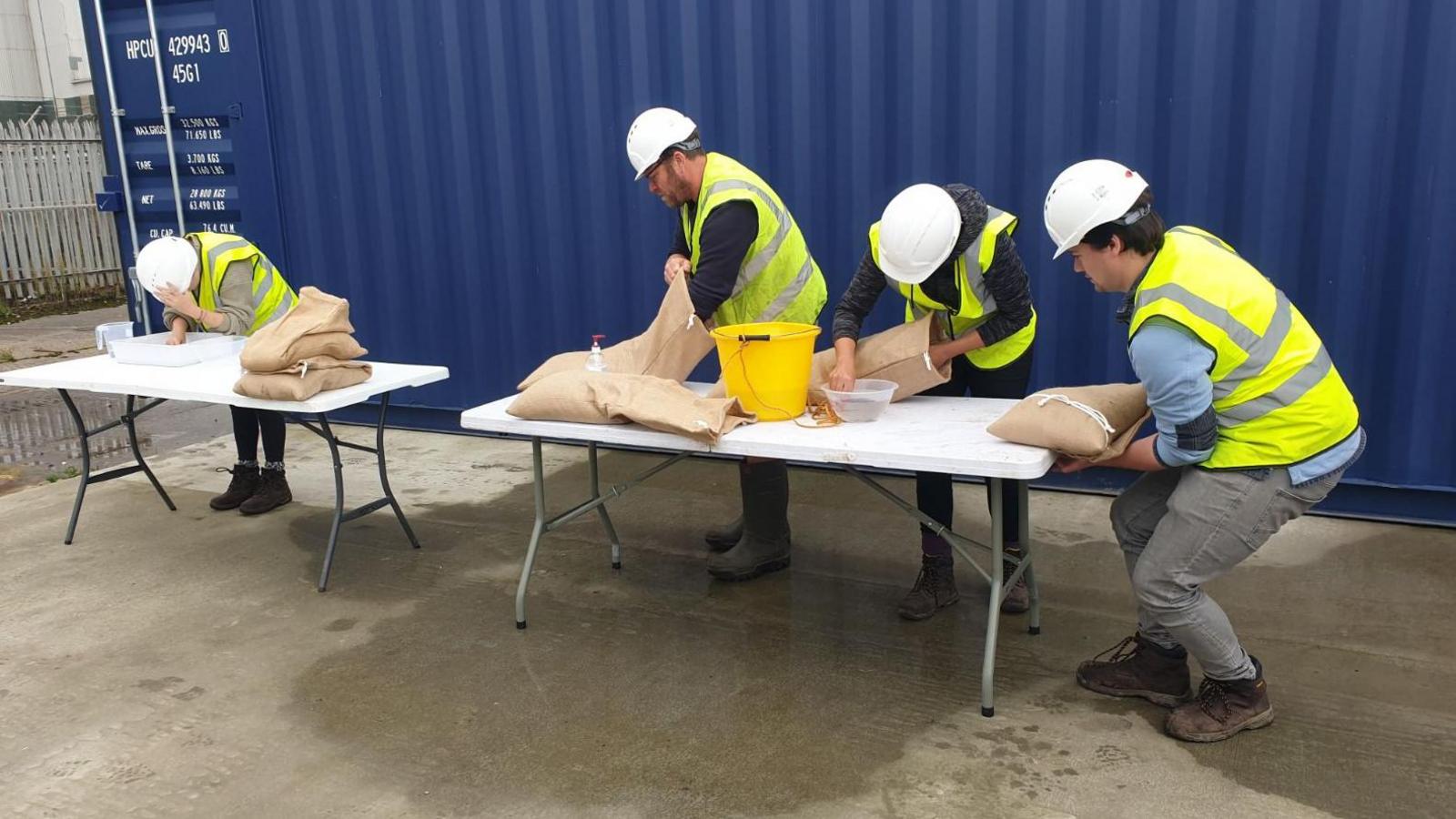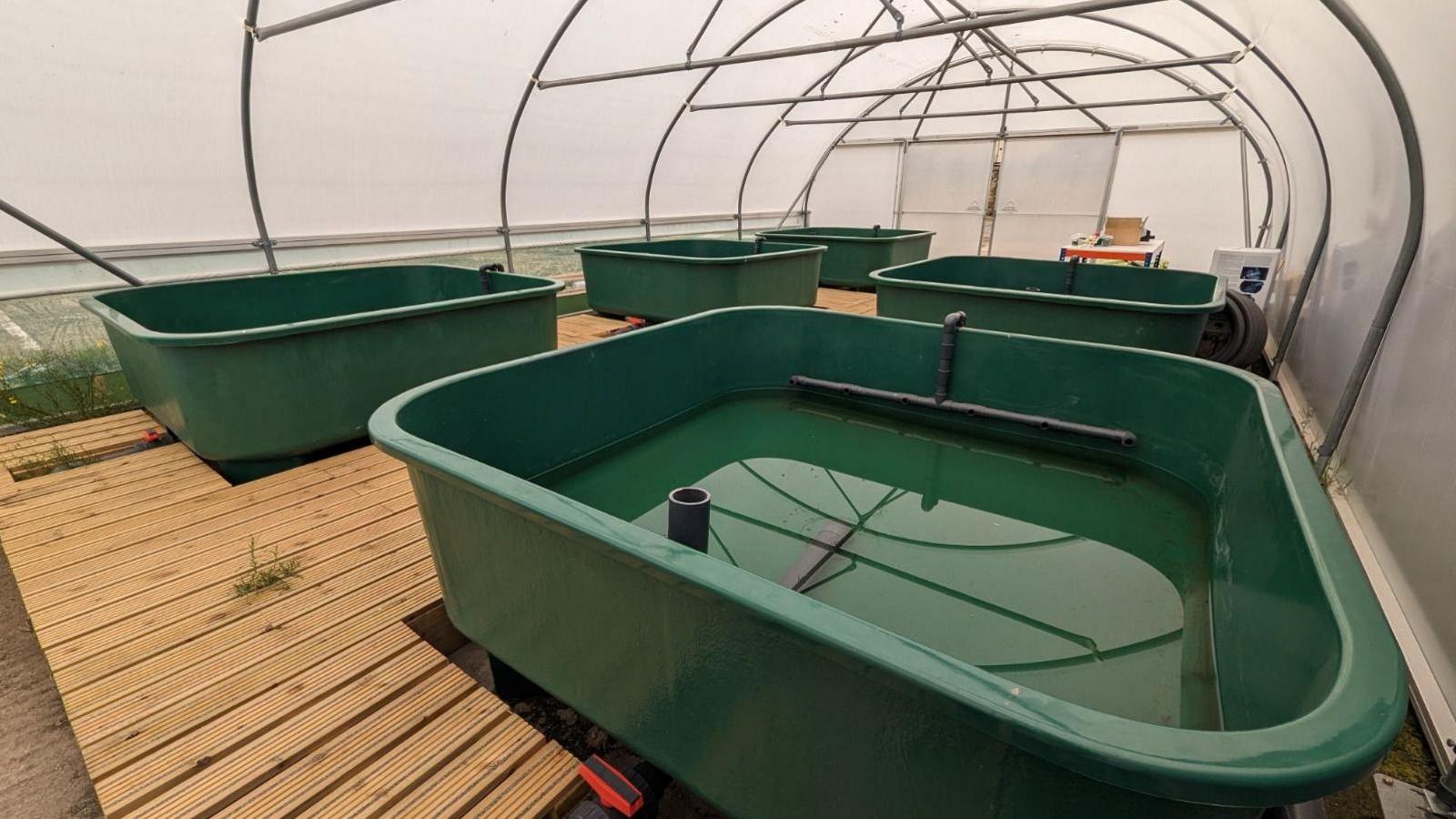Seagrass to be replanted after failed attempt

Seagrass, which stores CO2, can help in the fight against climate change
- Published
A project to plant seagrass in the Tees Estuary is due to get under way, after an attempt failed last year.
The Tees River Trust planted seedlings over the summer but they were quickly buried by strong tides caused by storms.
This time around more mature plants will be used, in the hope they are more hardy against the currents.
Seagrass has many environmental benefits including storing CO2 which can help in the fight against climate change, said Henry Short, from the group.
He explained seagrass was important because it also removes excess nutrients from the water and provides habitats for a variety of species.
The Tees Estuary is designated as a European Marine Site (EMS) and is home to seals, salmons and herons.

Last year's team putting seagrass seeds into bags for planting
Over the last century about 92% of seagrass has been lost on Britain's coasts.
The seedlings planted in 2023 died after they became buried due to sediment movement in the estuary, Mr Short said.
To combat this, the team has been growing seagrass plants in a nursery-like facility inside five tanks of water.

The seagrass will be monitored over the next year
On Tuesday, those working on the project will attempt to plant more mature plants in the estuary during low tide.
“If you’ve got a plant that’s already got a bit of root, it can anchor up into the sediment,” Mr Short said.
Their growth will be monitored over the next year to see if they survive.
“Seagrass naturally dies back over the winter,” Mr Short added. "The next big step will be to see if comes back again [in spring]."
Follow BBC Tees on X (formerly Twitter), external, Facebook, external and Instagram, external. Send your story ideas to northeastandcumbria@bbc.co.uk.
Related topics
- Published9 November 2023

- Published10 August 2023
